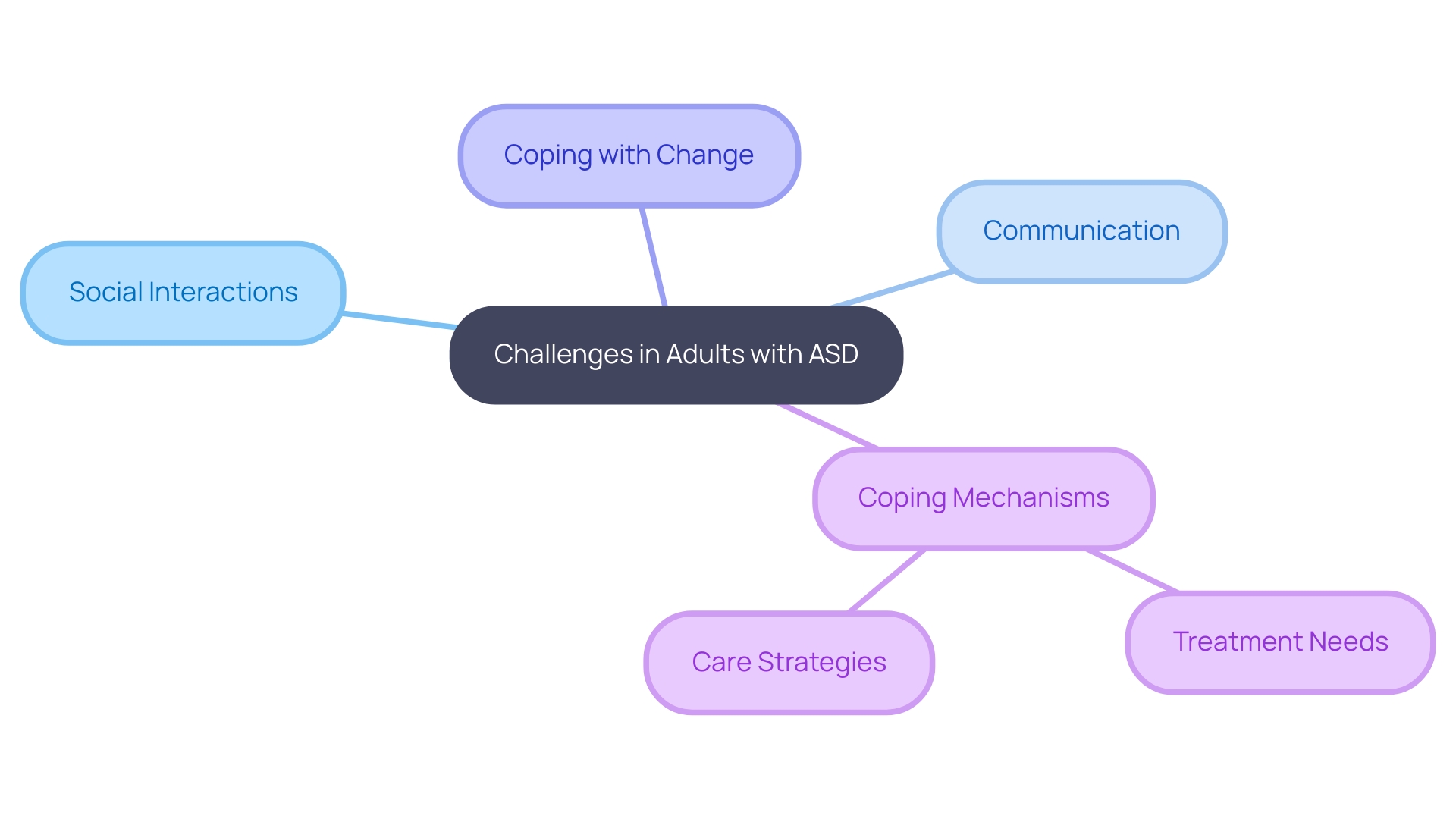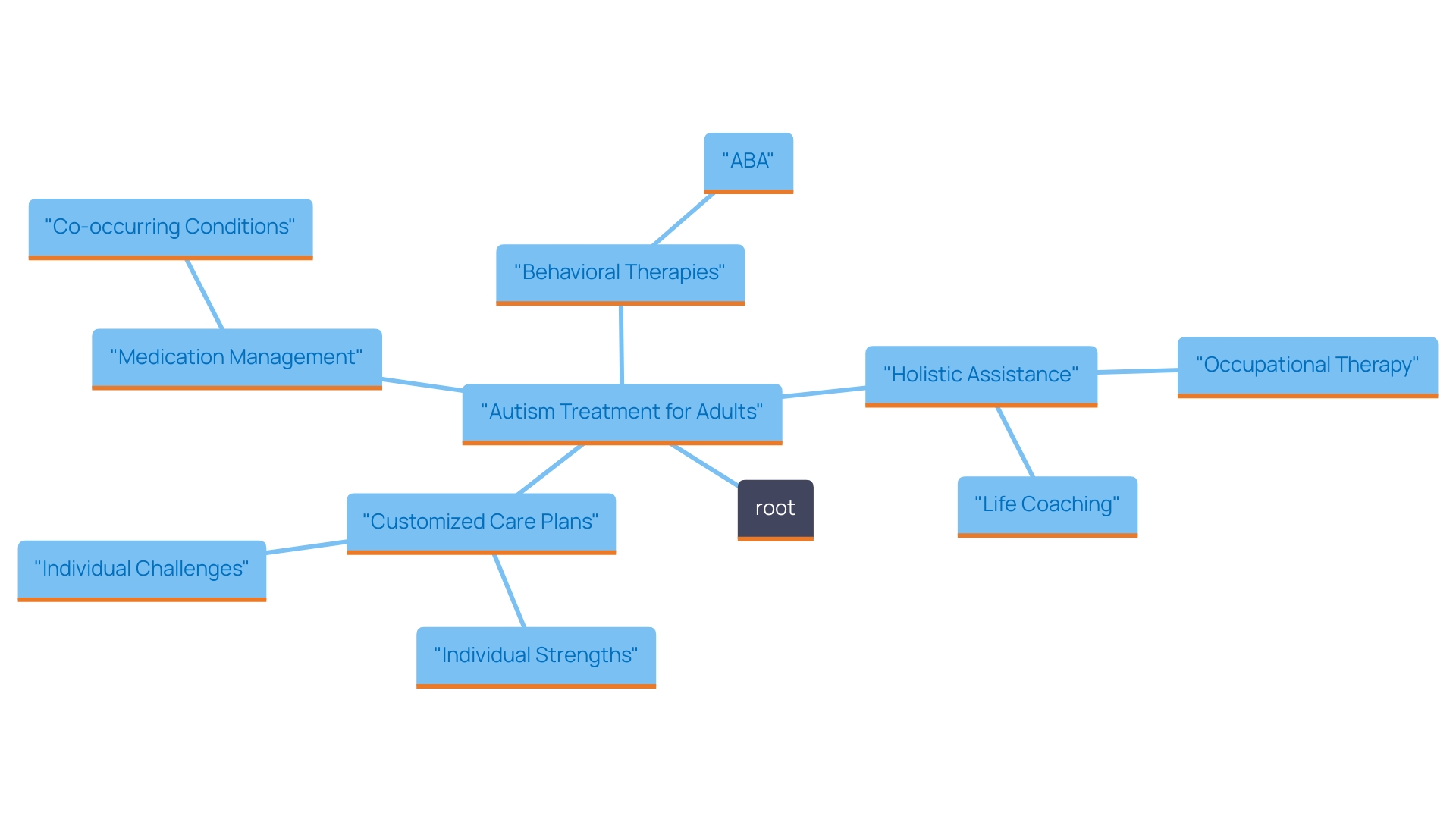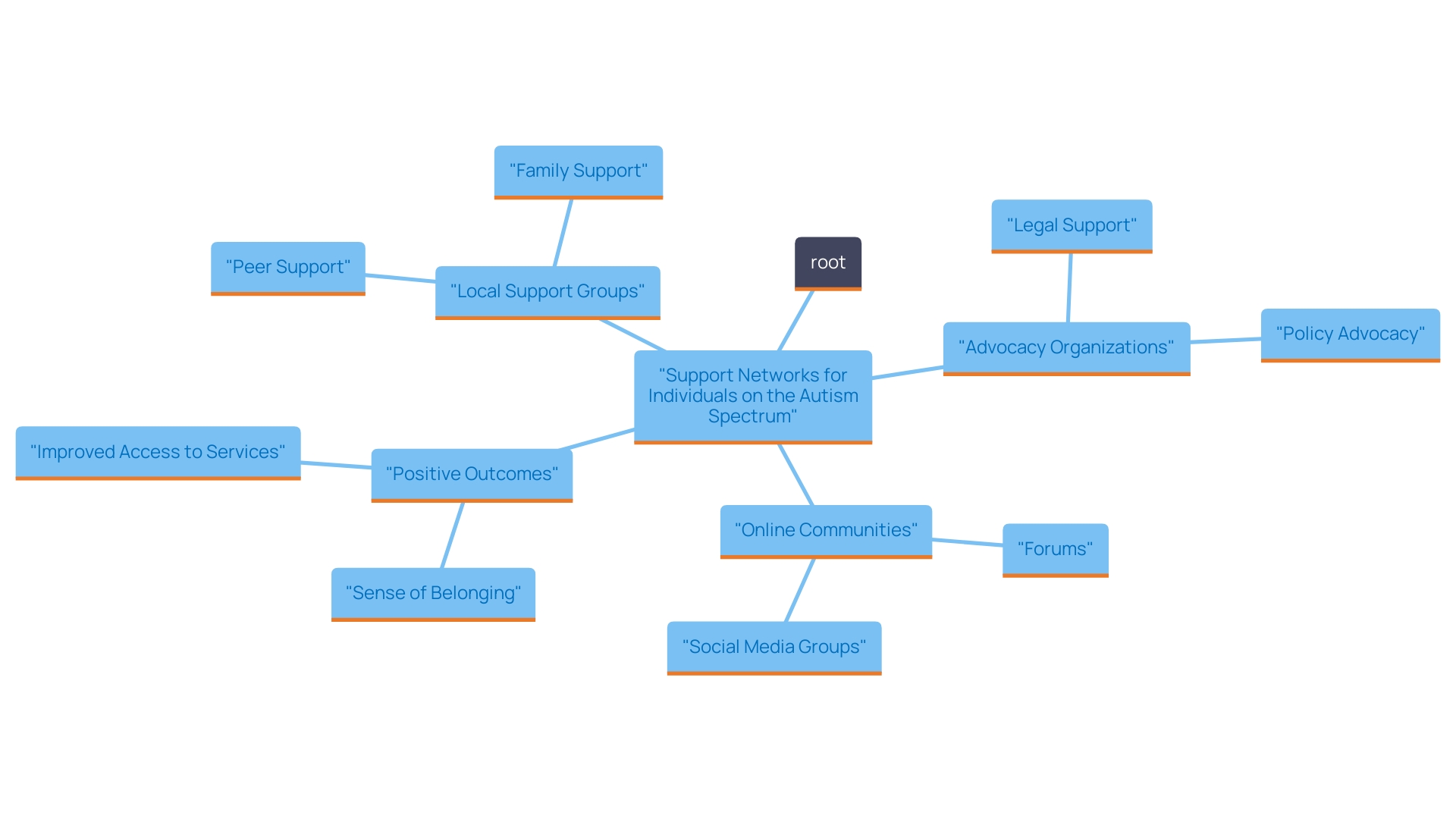Introduction
Navigating the world as an adult with Autism Spectrum Disorder (ASD) presents a distinct set of challenges that often differ from those faced in childhood. As adults grapple with social interactions, communication hurdles, and the stress of adapting to change, understanding these nuances becomes essential for effective support and treatment. This article delves into the complexities of ASD in adults, exploring comprehensive treatment strategies that blend behavioral therapies, medication, and holistic approaches tailored to individual needs.
Furthermore, it highlights the critical role of community and support systems in fostering a sense of belonging and enhancing the quality of life for those on the spectrum. By equipping caregivers and professionals with the knowledge and resources needed, a path toward empowerment and improved well-being emerges for adults with autism.
Understanding Autism Spectrum Disorder in Adults
Autism Spectrum Disorder in grown individuals manifests differently than in children, often leading to unique challenges. Adults with ASD may experience difficulties in:
- Social interactions
- Communication
- Coping with change
Understanding these characteristics is vital for customizing effective care strategies. Additionally, many individuals may have developed coping mechanisms over the years, which can impact their treatment needs. Recognizing these factors is essential for both caregivers and professionals in providing effective assistance.

Comprehensive Treatment Strategies for Adults with Autism
A comprehensive approach to treating adults with autism often includes a combination of behavioral therapies, medication management, and holistic assistance. Behavioral therapies such as Applied Behavior Analysis (ABA) focus on improving social skills and reducing challenging behaviors through structured interventions.
Medication may be prescribed to manage co-occurring conditions like anxiety or depression. Additionally, holistic assistance, including occupational therapy and life coaching, can enhance daily functioning and life satisfaction.
Each individual’s care plan should be customized to their unique needs, considering their strengths and challenges.

The Role of Community and Support in Autism Treatment
Community and assistance networks are essential in the care of individuals on the autism spectrum. Connecting with local support groups, advocacy organizations, and online communities can provide invaluable resources and shared experiences. Interacting with individuals who comprehend the distinct challenges encountered by adults with this condition promotes a sense of belonging and lessens feelings of isolation.
Additionally, community awareness and advocacy can lead to more inclusive environments, enhancing access to services and opportunities for individuals on the spectrum. Encouraging open dialogue within communities can drive positive change and support for all individuals affected by autism.

Conclusion
Navigating adulthood with Autism Spectrum Disorder presents unique challenges that require a nuanced understanding and a tailored approach. Recognizing the distinct difficulties in social interactions, communication, and adapting to change is crucial for effective support. By understanding these complexities, caregivers and professionals can better respond to the individual needs of adults with autism, ensuring that they receive the most appropriate care.
Comprehensive treatment strategies that incorporate behavioral therapies, medication, and holistic approaches are essential in addressing the diverse needs of adults on the spectrum. Each treatment plan should be personalized, considering the individual’s strengths and challenges, to promote improved functioning and overall well-being. Emphasizing a collaborative approach not only empowers individuals but also enhances their quality of life.
Equally important is the role of community and support systems in fostering a sense of belonging for adults with autism. By connecting with local and online resources, individuals can share experiences and find encouragement, reducing feelings of isolation. Advocacy and community engagement are critical in creating inclusive environments that provide access to necessary services and opportunities.
Together, these elements pave the way for a more supportive society, where adults with autism can thrive and lead fulfilling lives.




